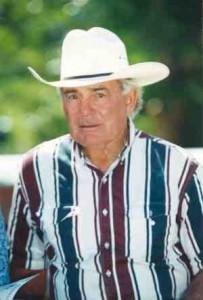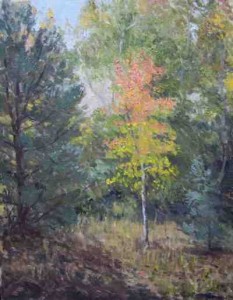Review by Ed Quillen
Local Novel – November 2006 – Colorado Central Magazine
Cochetopa Dreams
by Carroll E. Allison
Published in 2006 by Western Reflections
ISBN 1-932738-34-7
THIS BOOK READS like a good genre novel, but it’s hard to put your finger on the precise genre. It’s a romance with a spunky heroine who ends up with a good man. It’s got some gothic elements because she is often alone in an isolated and mystery-ridden old house. There’s a ghost story in here, too, as well as a touch of the traditional western with horses, cattle, a ranch and a battle with the elements.
Cochetopa Dreams has a contemporary setting in Saguache Park, south of Cochetopa Pass in the rolling La Garita Hills along the Continental Divide. But the full story started more than a century earlier with Henry Jacobson, an ambitious young man who hauled freight into Bonanza during its boom days. He saved enough money to start a ranch, the Circle J, and he ran it well enough so that it grew to more than 10,000 acres.
Henry’s first wife died of smallpox. In 1898, he married Ruth Parker, a Denver girl of 19 who bore him two children, Nathaniel and Elizabeth. The influenza epidemic of 1918 carried him away, but Ruth stayed on at the ranch until her death in 1967. Nathaniel disappeared on a hunting trip in 1915, and Elizabeth left Colorado, never to return, as soon as she was of age.
That’s about all that Susan O’Brian can learn, at least at first, about the ranch where she’s just hired on as caretaker. It still runs a few cows — and there’s a grizzled ranch hand named Jack Semple who tends the livestock — but mostly it caters to vacationers who ride, fish, loaf, and hunt.
Susan, a 35-year-old divorced single mother from the Denver area, saw an ad for the ranch job in a metro newspaper, and it sounded like a pleasing escape from commuting and the other pressures of civilization. Her 15-year-old son, Ben, is dubious at first, but soon finds that he likes ranch life and working with Jack.
Susan’s first high-country winter looms, and she is apprehensive, especially after learning that the record tenure for previous caretakers is less than two years. Then the venerable rocking chair starts rocking on its own, and a faint scent of vanilla wafts through the old ranch house.
Author Carroll Allison obviously knows the territory. The fabricated history of the Circle J and the Jacobsons is plausible, and the modern descriptions of the area ring true. Her lead character, Susan, goes to visit the local realty agent, Fred Thompson, who represents the ranch’s distant ownership:
“His office was located in a restored house on Highway 285 near the Saguache museum. Photographs of the homes and properties he listed covered the wall behind his desk. Fred had one of the few commercial enterprises left in Saguache. While the town remained the county seat, there was little business outside of a small grocery, convenience store, gas station, liquor store, and craft shops. For any real shopping, Susan had to drive an additional thirty-five miles south to Monte Vista.
“‘Morning, Susan,’ Fred said from behind the copy of the Saguache Crescent he was reading. The Crescent was the local weekly that laid claim to being one of the last newspapers in the country printed with the hot-metal letterpress process. He snapped the pages, then folded the paper and dropped it on the floor next to his desk. ‘Not much news this week,’ he said.”
At that point, Susan pushes Fred for more information about the owners, but he is taciturn. She learns a little more in a visit to the Saguache Museum, but she’s a little disconcerted because the old-timer at the museum seems to know all about her, what with small-town gossip. Then she meets a handsome, and single, forest ranger….
By and large, this is a well-written book with good characters. It shifts easily from past to present, and the author has a fine eye for authenticity and detail in everything from wood-stove cooking to packing mules.
Even so, there were a couple of jarring notes. Susan visits the Saguache Museum in October, just dropping by without making special arrangements. But for as long as I can remember, it has always closed for the winter in September.
Elsewhere we read that some cows might be calving in November with winter coming on fast, which seems like a guaranteed way to lose both calves and money.
Okay, these are quibbles — it’s just that Cochetopa Dreams generally reads so true that small glitches like these jump out at you, including ones that might pass unnoticed in many novels.
Cochetopa Dreams is an entertaining and engaging novel, set in familiar country with some supernatural elements. I had a good time with it, and I’ve no doubt that others who enjoy genre fiction will too — even if it doesn’t quite fit in any regular genre.


